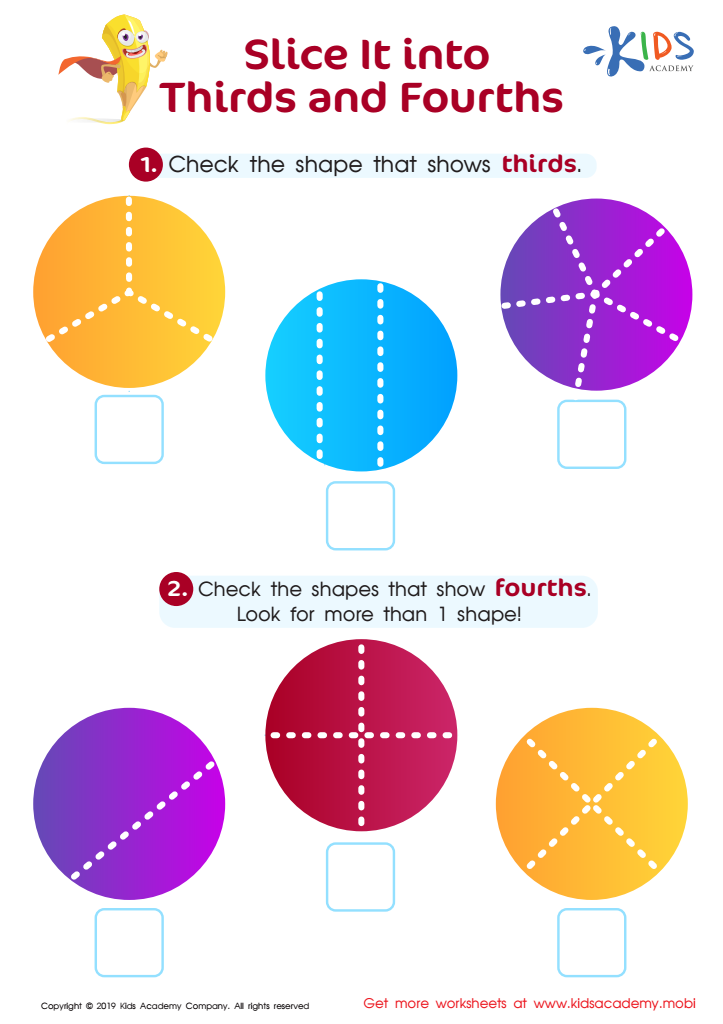Basic fraction understanding Worksheets for Kids
1 filtered results
-
From - To


Slice in Thirds Fourths Worksheet
Question/Answer
How does the mastery of the Basic fraction understanding skill affect a student's performance at an early age?
Mastery of the Basic fraction understanding skill at an early age significantly enhances a student's mathematical performance. It lays a strong foundation for advanced mathematical concepts and problem-solving skills. By grasping fractions early, students are better prepared for algebra and beyond, leading to increased confidence, higher achievement in math classes, and improved standardized test scores.
What does the Basic fraction understanding skill mean when it comes to Grade 2 Geometry learning?
The Basic fraction understanding skill in Grade 2 Geometry involves recognizing and naming fractions as part of a whole, using visual models such as shapes or objects divided into equal parts. This foundational skill helps students grasp the concept of halves, thirds, and fourths, setting the groundwork for more advanced fraction learning in future grades.
Why is the Basic fraction understanding skill important for Grade 2 students?
The basic fraction understanding is crucial for Grade 2 students because it lays the foundational knowledge for advanced mathematical concepts and problem-solving skills. It helps them understand parts of a whole, proportional reasoning, and the relationship between fractions, decimals, and percentages, which are essential in everyday life and further STEM learning.
 Assign to the classroom
Assign to the classroom












